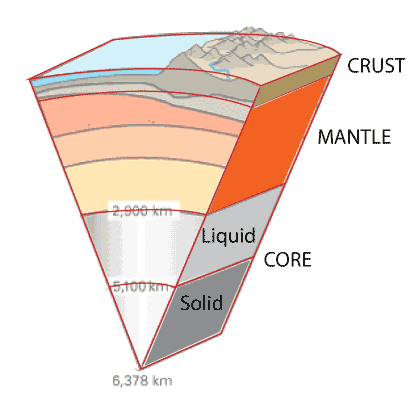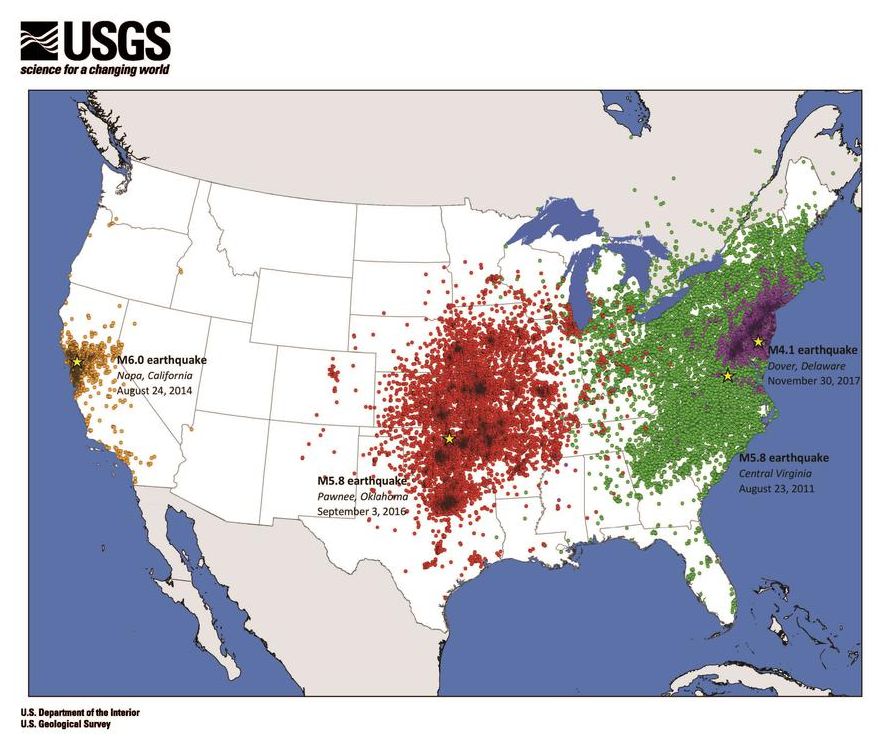- What is an earthquake?
- What are tectonic plates?
- Intra vs. inter plate earthqaukes
- Earthquakes in New England
- Amplification
What is an earthquake?
An earthquake occurs when two blocks of the earth slip past each other. This slip surface is known as a fault. When the edges of faults stick together, but the rest of the earth's surface is moving due to plate tectonics, pressure builds up along these surfaces. Eventually, the built up pressure will release in the form of energy called seismic waves. Seismic waves shake the earth as they move through it, and when they reach the surface they shake anything on it, like the ground, roads, buildings and us. This process of energy release is an earthquake.
What are tectonic plates?
Tectonic plates split the earth's outer crust into distinct pieces that are always slowly moving on top of the hot, yielding mantle layer.

Image: USGS/Public Domain
There are three types of movement: convergent, divergent and transform. Convergent plates move toward each other and collide; divergent plates move away from each other, separate and create new crust; and transform plates slide past each other horizontally. Earthquakes are concentrated along these plate boundaries.

Intra vs. inter plate earthqaukes:
Most earthquakes occur at collisional plate boundaries (interplate), but some occur within the plate (intraplate).
Earthquakes in New England:
Vermont is located within the North American plate far from the boundary, so we only experience intraplate earthquakes. Intraplate earthquakes usually take advantage of ancient faults that may be burried far beneath the earth's surface.
Amplification
Even though earthquakes on the eastern coast of the United States are relatively low in magnitude, soft sediment deposists such as sand or clay amplify the seismic waves causing them to increase ground motion. Soft sediments are lower in density than solid rock, so earthquake waves pass more slowly through them compared with the bedrock. As the wave slows down, it increases in amplitude creating a larger wave with more energy. More energy equals more ground disturbance.

 Image: Eric Jones, USGS. Public domain
Image: Eric Jones, USGS. Public domain
This map from the USGS "Did You Feel It?" data shows that earthquakes in the east are felt over larger areas than quakes on the west coast.
